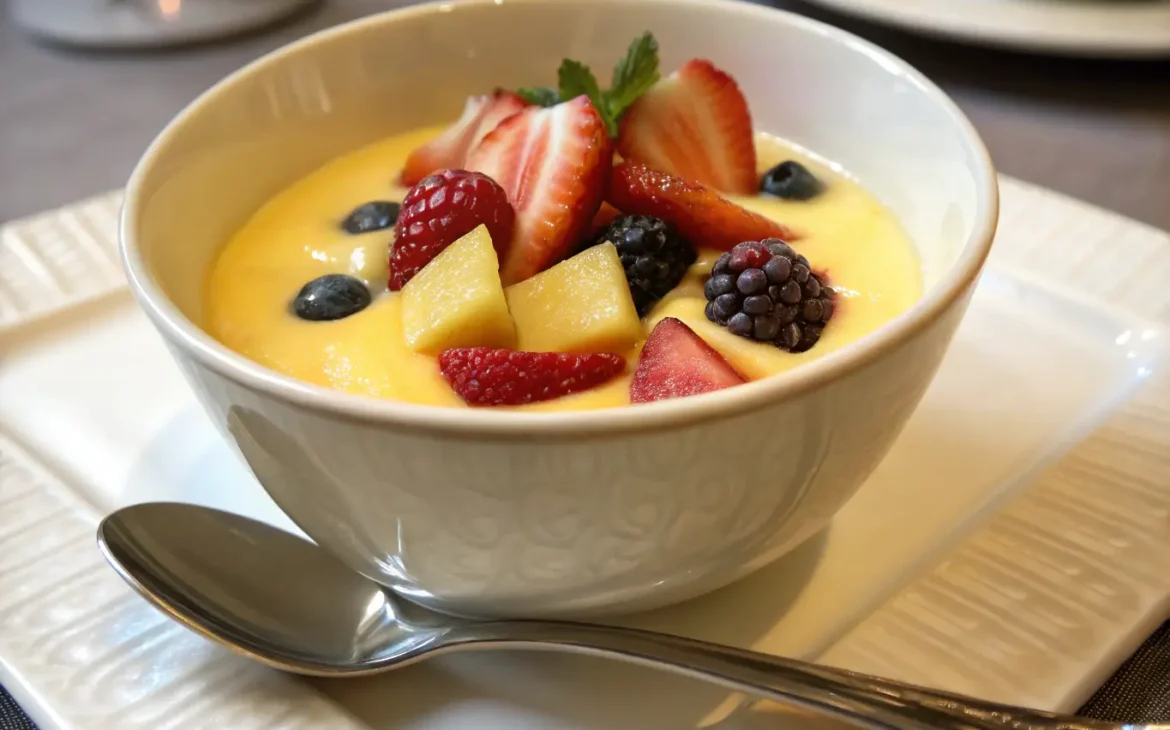Zabaglione: The Classic Italian Custard You Need to Master
The Timeless Allure of Zabaglione
Few desserts embody the soul of Italian dolce vita quite like zabaglione (also called sabayon in French cuisine). This ethereal, velvety custard—whipped up from just egg yolks, sugar—has been warming hearts since the Renaissance. Unlike its French cousin, traditional zabaglione boasts a bold, and an airy texture that’s equally sublime served warm in a rustic ceramic cup or chilled as an elegant parfait.
What makes zabaglione truly special is its remarkable duality – it’s both a peasant’s comfort food and a nobleman’s delicacy. In the chilly winters of Piedmont, grandmothers would whip up batches to warm children’s bellies, while in Renaissance Florence, the Medici court served it gilded with edible gold leaf. This humble-yet-luxurious quality continues to captivate food lovers worldwide.

Why Zabaglione Deserves a Spot in Your Dessert Repertoire
3-ingredient alchemy – Transform pantry staples into gold
7-minute wonder – Faster than preheating your oven
Versatile virtuoso – Sauce, mousse, or standalone delight
Historic heritage – Savored by Medici nobles and Roman popes
Seasonal adaptability – Serve warm in winter, chilled in summer
Gluten-free naturally – Perfect for diverse dietary needs
Fun fact: The name “zabaglione” may derive from zabaja, a medieval Dalmatian custard brought to Italy by Venetian merchants. Food historians trace its refinement to 16th-century Turin where it was prescribed as a digestivo for noblemen overindulging in banquets. Some accounts suggest Catherine de’ Medici introduced it to the French court, where it evolved into sabayon.
The Science Behind Perfect Zabaglione
Understanding the chemistry elevates your technique:
- Egg yolks provide lecithin for emulsion
- Sugar stabilizes the foam structure
- Marsala’s alcohol lowers coagulation temperature
- Steam heat gently cooks while incorporating air
The magic happens when these elements combine at precisely 65°C (149°F) – hot enough to be safe, cool enough to remain silky. This temperature sweet spot is why zabaglione masters insist on constant whisking and vigilance.
Authentic Zabaglione Ingredients
Core Components (Serves 4)
- 6 fresh egg yolks (room temperature) – The richer the eggs, the more luxurious the result. Look for deep orange yolks from pasture-raised chickens.
- ¾ cup (150g) fine sugar – Superfine dissolves faster. For authentic texture, avoid substituting with honey or syrup.
Equipment Essentials
- Copper bowl (ideal) – The ions help stabilize the foam
- Balloon whisk – No substitutes; the wire loops are key for proper aeration
- Bain-marie setup – Use a saucepan with 2-inch simmering water
- Digital thermometer – For precision, especially when learning
- Glass serving cups – Traditionally used to showcase the golden hue
Pro Tip: For an authentic Venetian touch, source DOC Marsala from Sicily—its caramelized, nutty notes define true zabaglione. Avoid “cooking Marsala” which contains salt and additives.
The Art of Perfect Zabaglione: Step-by-Step
1. The Venetian Whisking Ritual
- Combine yolks and sugar in bowl, whisking vigorously until pale and ribbony (~3 mins). The mixture should form ribbons that hold shape briefly before dissolving.
- Gradually stream in Marsala while whisking—never dump all at once. This slow incorporation prevents curdling.
2. Alchemy Over Steam
- Set bowl over simmering (not boiling) water. The water should gently bubble, not violently roll.
- Whisk continuously in a figure-8 motion for 5-7 minutes until:
- Volume triples to a light, foamy consistency
- Temp reaches 65°C/149°F (safe for raw eggs)
- Forms “soft peaks” that slowly melt back
- Leaves distinct “tiger stripes” on the bowl’s sides
Critical Moment: When the foam coats the back of a spoon thickly and a finger drawn through it leaves a clean path, it’s done. This is called the “nappe” stage.
3. Serving Traditions Through the Ages
- Renaissance Style: In gilded cups with candied violets
- Warm Comfort: In heated espresso cups with amaretti crumbs
- Summer Elegance: Chilled with berries in parfait glasses
- Dramatic Finale: Flambéed tableside with a splash of grappa
Regional Variations Across Italy
Each region puts its stamp on zabaglione:
- Piedmont: Uses Moscato d’Asti instead of Marsala
- Veneto: Adds a whisper of cinnamon
- Sicily: Incorporates citrus zest from local lemons
- Trentino: Substitutes with local apple brandy
Troubleshooting the Tuscan Way
| Issue | Solution | Prevention |
|---|---|---|
| Grainy texture | Whisk in 1 tbsp cold Marsala off-heat | Maintain steady heat, don’t rush |
| Too boozy | Cook 2 mins longer to evaporate alcohol | Use drier Marsala varieties |
| Won’t thicken | Add 1 extra yolk next time | Ensure fresh, room temp eggs |
| Curdling | Immediately remove from heat, whisk in ice cube | Control water temperature |
Preserving Perfection
- Fridge: Up to 24 hours (whisk before serving). Note: texture changes as it chills.
- Reheating: Gently over bain-marie while whisking
- Freezing: Not recommended—loses its magical texture
“Zabaglione waits for no one,” as Roman chefs say—serve it immediately for that signature cloud-like texture. The window of perfect consistency is brief but glorious.
FAQs from Italian Nonnas
Q: Can I make zabaglione without alcohol?
A: Mai! But for kids, use white grape juice + lemon zest. The alcohol helps stabilize the foam, so non-alcoholic versions require extra care.
Q: Why copper bowls?
A: Ions stabilize the foam—but stainless steel works fine. The key is the whisking technique.
Q: Is raw egg safe?
A: In Italy, we use fresher-than-fresh eggs and cook to safe temps. Use pasteurized eggs if concerned.
Q: Can I use a hand mixer?
A: Purists say no, but if you must, use lowest speed and watch carefully. Hand-whisking builds better texture.

La Dolce Vita on a Spoon
Mastering zabaglione isn’t just about technique—it’s about embracing la gioia di vivere (the joy of living). This sunshine-yellow elixir captures Italy’s essence: simple ingredients transformed into pure celebration through patience and passion.
When you serve zabaglione, you’re not just presenting a dessert—you’re offering a taste of Italian history, from Renaissance banquet halls to modern trattorie. The first spoonful should transport your guests to a sun-dappled piazza, even if you’re in your own kitchen.
Ready to taste history? Whip up a batch tonight, raise your glass to i nonni, and let us know your favorite variation with #RealZabaglione. Salute! 🍷
Pro Tip from Venice: For an unforgettable experience, serve zabaglione in edible chocolate cups—the contrast of crisp chocolate and warm custard is divine. Simply brush melted chocolate into muffin liners, chill, then peel away the paper before filling.

